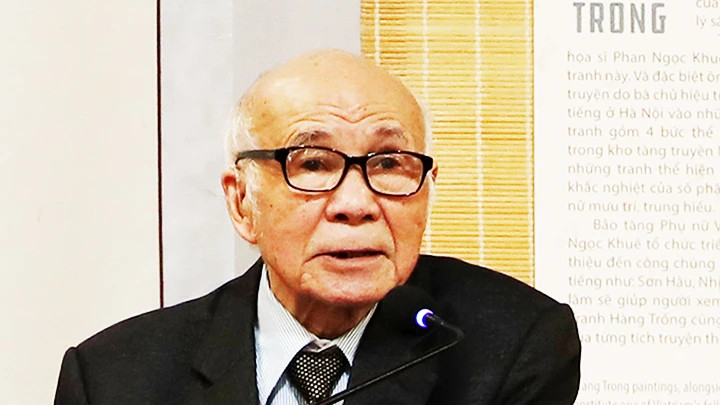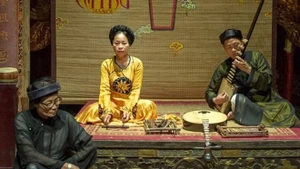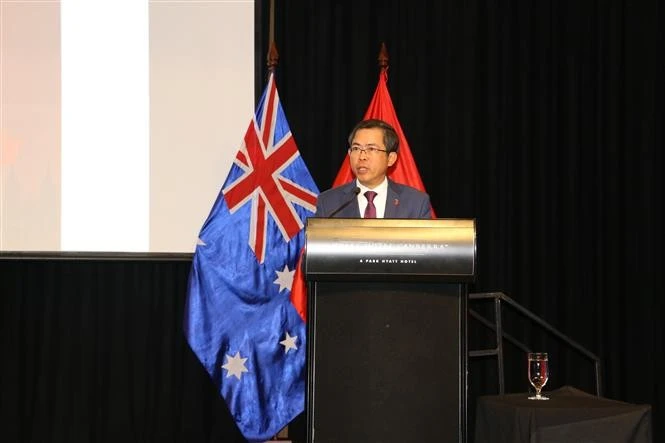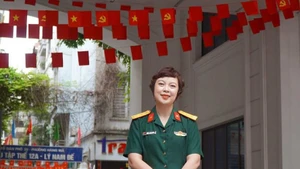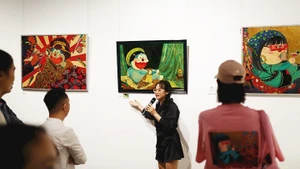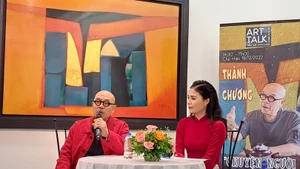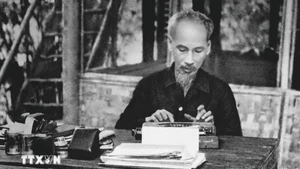Q: Where did your passion for collecting folk paintings come from?
A:I was fortunate to study at a fine art university and then worked for the Vietnam Museum of Fine Arts, so I have been attached to artworks, especially folk paintings and sculptures. My passion for folk arts also came from that and from the teachers who guided and inspired me. Among the “teachers” I admire are H'Mong ethnic minority women. The women with excellent skills taught me how to draw beeswax on fabric. Not only did they teach me how to draw, but they also passed on to me a unique art form of the nation, which is a very valuable cultural heritage.
If teachers without degrees are folk artisans, there are teachers with profound education and qualifications in the cultural and artistic environment. And to progress, we must try to reach such masters.
Q: Many people have not understood the Hang Trong folk paintings associated with folk tales. Could you share more about this type of folk paintings?
A: Before 1945, Hanoi had many painting shops in the ancient inner streets and also in Thuong Tin, Canh, and Dien Districts. During the markets leading up to Tet (Lunar New Year Festival), paintings were brought to Hang Trong Communal House for selling, commonly called Hang Trong paintings. Although the common name is Hang Trong painting, each shop and locality has its own identity and mark. The paintings had many genres, such as paintings for worshipping, paintings telling folk tales, paintings on daily life and Tet paintings, etc. Among them, with the type of paintings telling folk tales, the shop owners had to make heavy investments, from choosing engraving boards and skilled engravers to the stage of drawing and engraving. The process from drawing to engraving was a project that required investment of both effort and money. The last stage is printing the paintings. However, after 1954, almost no one printed the type of paintings associated with folk tales. There were only the lines of worship paintings and religious paintings.
Q: Why did you get this precious set of Hang Trong paintings?
A: When I go to any land, I ask the local people if there are any sources of paintings or if they still have any folk paintings because folk paintings are popular among people. The reality is that many folk paintings made of paper cannot be preserved for a long time in the climate in the northern region. Therefore, the collection of each painting is very important. Over the past decade of my career, I have collected many folk paintings, of which ten sets of Hang Trong paintings associated with folk tales were donated by the owner of Thanh An painting shop in 1980. The paintings were printed from sophisticated engravings by artisans in the Lieu Trang residential area (Hai Duong Province). Each set includes four paintings that vividly feature the stories under the Nom (Vietnamese ideographic) scripts.
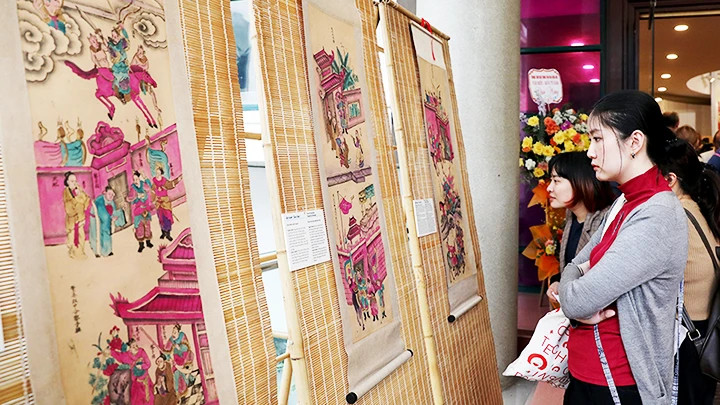 |
| The exhibition on Hang Trong paintings features 40 paintings in 10 sets of Hang Trong paintings associated with folk tales, which were collected by painter Phan Ngoc Khue. They represent ancient stories in the cultural and spiritual life of Vietnamese people. The chronology of the displayed paintings is said to be from the 19th century to before 1945. They are showcased at the Vietnam Women’s Museum in Hanoi until March 31. |
Q: How did you preserve these hundred-year-old paintings so that they are still almost intact today?
A: At that time, my family's house of dozens of square metres was a living place and a studio for painting and preserving paintings. I have always told my wife and children that this set of paintings is very precious and needs to be carefully preserved. All members must pay attention to all activities to avoid affecting them.
When I collected them, the paintings were old and dirty and many of them were torn. Therefore, I had to work hard to preserve them so they could be presented to the public. It took nearly a year to complete the conservation of the paintings, with many different stages.
After 40 years, the paintings I have preserved are still not broken or creased and have almost no mould spots at all.
Q: Could you share about the book “Hanoi’s Hang Trong Hanoi Folk Paintings” which won the “Bui Xuan Phai - For the Love of Hanoi” Award?
A: The book “Hanoi’s Hang Trong Hanoi Folk Paintings” was edited by me and completed in 2016, when I was 79 years old. It consists of more than 400 painting titles in the Hang Trong folk painting category. This number cannot cover the history of several centuries of the folk painting line of the ancient capital of Thang Long – Hanoi. However, the book helps us see that the art of the Vietnamese people, especially the art of printmaking and folk painting, is a lasting tradition.
It's a pity that only the family of artisan Le Dinh Nghien still follows this form of folk painting, but mainly drawing according to prints. No one pursues the creation of wood carvings. I just hope that together we will think of methods to restore and popularise this art of making paintings and telling stories so that today's generation can know, understand and love the traditional culture of the nation.
Thank you very much!
